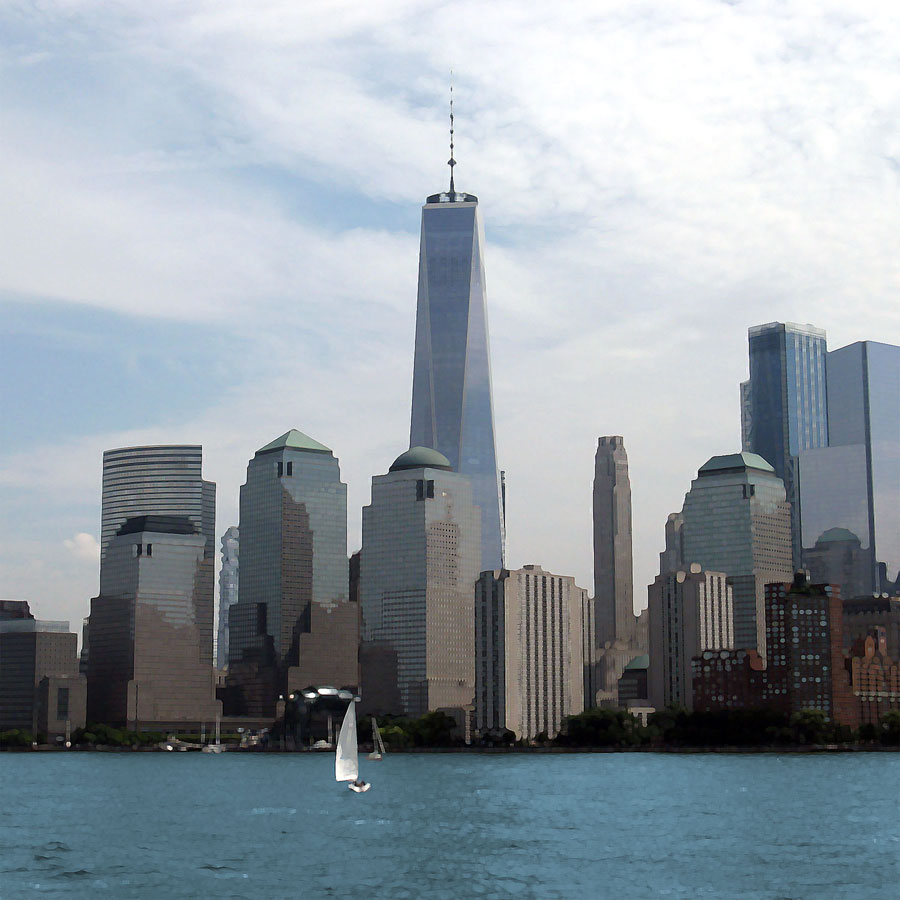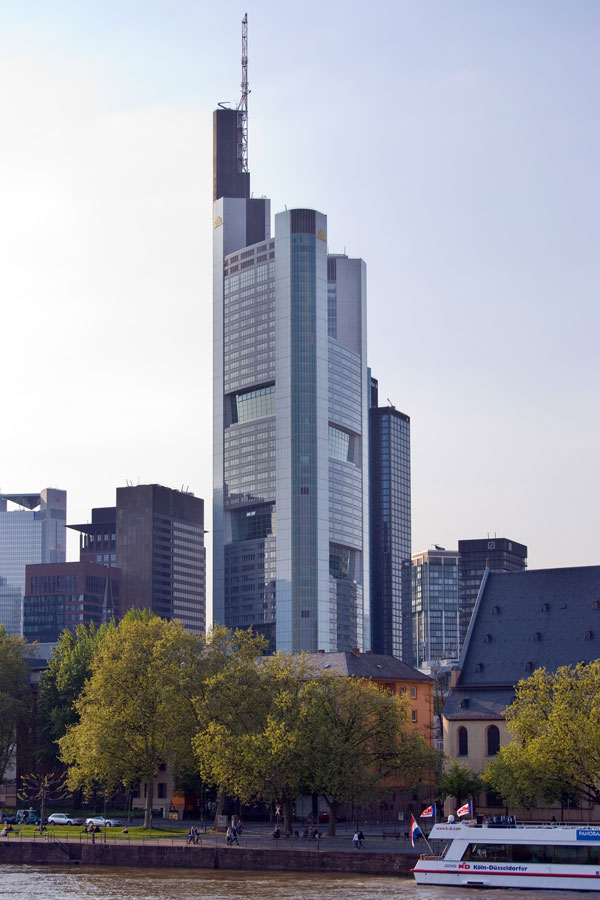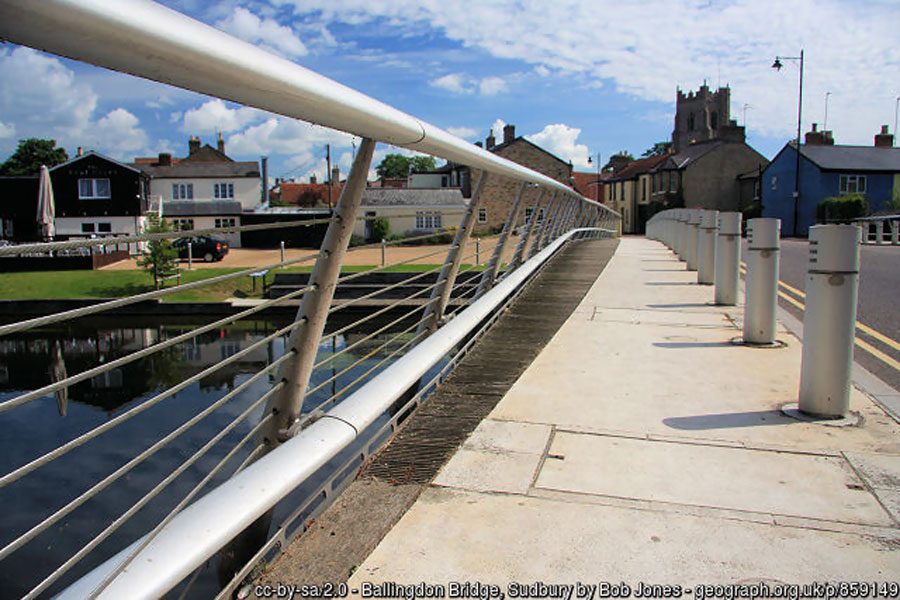September 26, 2018
In a previous blog article (“Everyday Aluminum: Construction”) we discussed how aluminum extrusions have lately become an important feature in the construction industry. Building contractors have long recognized the structural and aesthetic benefits of using aluminum components in their work. Nowadays you commonly see them in windows, doors, frames, stairways, and elsewhere.
In the realm of architecture too we find that this lightweight and versatile metal now plays an increasingly important role in more heavily weighted and complex fabrications within buildings, bridges, and other architectural structures: in railings, enclosures, curtain walls, façades, and pergolas, just to name a few. This article, then, will focus on specific examples of those kinds of whole structures in which aluminum stands out as a major component in their construction.
Of course, for thousands of years humans have used all kinds of materials to build things, ranging from mud, straw, and stone to wood, brick, and steel. Yet, compared to these, aluminum alloys boast a set of properties which lend themselves readily to certain aspects of architectonic construction, including:
- high weight-to-strength ratio
- corrosion-resistance
- fire-resistance
- durability
- flexibility
- extrudability
- malleability
- formability
- cost-effectiveness
- abundance (aluminum is the most plentiful metal in Earth’s crust)
- environmental friendliness (e.g., aluminum is 100% recyclable and is renowned for its insulating properties)
For these and other reasons, architects and property developers prize aluminum to help them achieve “green building” status and LEED (Leadership in Energy and Environmental Design) certification for their buildings. Last but not least, with its naturally occurring “sleek” appearance and its ability to retain various metallic colors and glosses, aluminum is inherently pleasing to the eye.
One World Trade Center Freedom Tower
You can see how it is used specifically for that purpose in Mexico City’s striking six-story Soumaya Museum (shown above), which is covered by 16,000 hexagonal aluminum tiles; or New York City’s visually compelling Freedom Tower, with its richly textured façade of shimmering aluminum and glass.
Below are examples of other aluminum-intensive buildings and structures of note from around the world.
Empire State Building
Considering aluminum is the third most abundant of all elements found in the crust of the Earth (after oxygen and silicon), it may seem surprising that it is only within the last hundred years that it has taken its rightful place alongside other more familiar metal building materials, such as iron and steel. The chief reason for that is its chemical reactivity: pure aluminum is never found free in nature, but instead exists in a variety of chemical compounds. It was only in the late 19th century that a reliable and cost-effective method was developed to extract aluminum in quantity from bauxite ore.
Empire State Building (source)
At first, in the 1920s, aluminum was used primarily for merely decorative purposes in buildings. By the early 1930s, however, it had graduated to the “big leagues” with the construction of the iconic—and, for its time, revolutionary—Empire State Building, where it was used profusely, not just in the spire but in integral interior structures as well.
To this day the Empire State Building remains revolutionary in that regard. Over the decades, weather and rust had deteriorated the original steel window frames to the extent that they began to leak air and water. So in 1994 those frames—all 5,460 of them—were replaced with aluminum ones. Given that metal’s famous durability and resistance to corrosion, those new frames should last a good while longer than their predecessors!
Commerzbank Tower
Commerzbank Tower, Frankfurt, Germany (source)
At 850 feet, the 56-story Commerzbank Tower is the tallest building in Germany, and the second tallest in all of Europe (after the Triumph-Palace in Moscow). What really sets it apart, however, is its status as an environmentally friendly “green” building. Thanks to its use of innovative “sky gardens” and other advanced technologies designed to reduce heating and cooling energy requirements, Commerzbank bills itself as the world’s first truly ecological skyscraper.
Playing a big part in this ecological effort at modern building design are the anodized aluminum rain screens on the outside and, on the inside, the extruded aluminum fabrications that provide ventilation.
The Wave
When people think of Holland, the first things that may come to mind are tulips, windmills, and dikes. But when people think of Holland’s air, the first thing that should come to mind is: corrosion. Constant humidity from the Rhine River, lakes, and countless canals, along with significant car and factory emissions, high concentrations of ammonia from farming, and of course extreme salinity (due to the country’s proximity to the sea), all combine to wreak corrosive havoc on metallic surfaces. Is it any wonder that Holland has some of the most stringent corrosion-resistance building requirements in Europe?
The Wave, Almere, Holland (source)
To meet this challenge, René van Zuuk, the architect of “The Wave,” chose aluminum cladding as his material of choice for the north-facing façade of this über-futuristic apartment building. Aside from its lightness, sturdiness, and ability to withstand most any atmospheric assault, aluminum’s extreme formability into dynamic 3D shapes sealed the deal to realize the designer’s vision. The result is an eye-catching dream of a building which, from a distance, seems to undulate like the very waves of the sea from which the land of Almere was once reclaimed.
Ballingdon Bridge
Aluminum isn’t just for buildings. Bridges too are excellent candidates for the structural aluminum treatment, thanks to its exceptional strength-to-weight ratio. For obvious reasons of safety, stability, and longevity, there is much to recommend aluminum for this purpose.
Case in point:
Ballingdon Bridge, Sudbury, England (source)
Ballingdon Bridge, which spans the River Stour in Sudbury, England, was designed to carry both foot and vehicle traffic—and to last 120 years. One key factor in achieving that goal was to employ aluminum extrusions in the construction of the bridge.
The balustrade in particular was designed to serve as a pedestrian handrail. Yet it is sturdy enough to stop a heavy truck from crashing through into the river; while at the same time it is light and open enough to provide uninterrupted views of the surrounding landscape. Instead of traditional (and heavy!) lampposts, lighting for the bridge is provided by a series of illuminated bollards, also made of attractive anodized aluminum.
Durable and attractive: what more could you ask of a bridge?
Statue of Liberty Restoration
Scaffolding for the Statue of Liberty Restoration Project (source)
To finish, we’ll consider another iconic American structure: the Statue of Liberty.
Or rather, not the statue itself (which is made of copper and iron), but the scaffolding erected around the famed monument for the 1984–1986 restoration project. And what a scaffold it was!
To quote Chris Evans and John O’Connor, the principals of Universal Builders Supply, the company to which the scaffolding contract was awarded:
The biggest challenge is that we couldn’t touch the statue itself. Usually scaffolding is not independent; it ties into whatever we’re gaining access to. There’s a word for self-supporting structures that are that tall: they’re usually called buildings. So, in fact, it went into the Guinness Book of World Records for the tallest freestanding scaffolding at 320 feet.
Moreover, in its exposed location on Liberty Island, the structure had to be able to withstand severe winter weather conditions, including destructively high winds and corrosive salt spray. The solution to this nearly impossible engineering challenge was to create an ultra-stable matrix of tubular extruded aluminum trusses, interconnected to enshroud the statue on all sides and attached, near ground level, only to the granite pedestal of the statue.
The project was completed in 1986. To this day, those who remember seeing the scaffolding in person swear that it was almost as inspiring to look at as Lady Liberty herself.
The lesson to be learned here is that if aluminum extrusions are capable of such astonishing feats of architecture, imagine what they can accomplish in your home or office. Hint: see our website for more inspiration!













